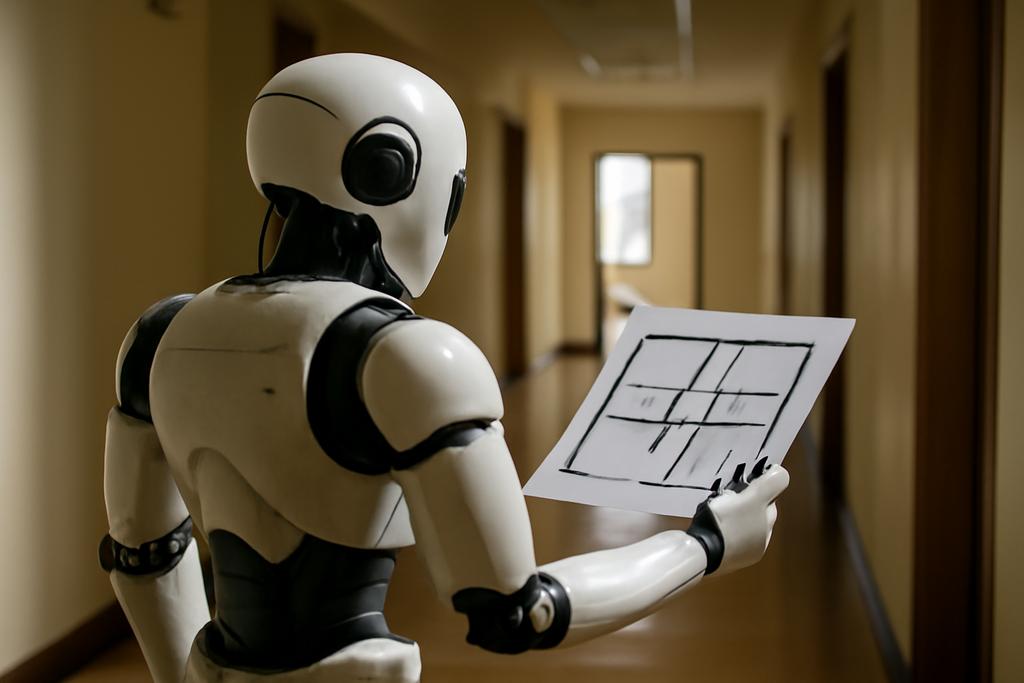Imagine effortlessly navigating a new building, simply by glancing at its floor plan. Humans do it instinctively; now, researchers at Central South University are bringing that ability to artificial intelligence.
The Challenge of Floorplan Localization
The task, known as Floorplan Localization (FLoc), presents a fascinating challenge. AI needs to locate itself within a building using only a simplified 2D floor plan — a far cry from the rich, complex visual information it typically relies on. Existing AI models often struggle with the significant differences between a building’s minimalist floor plan and the detailed 3D environment actually seen through a camera. Repetitive structures like hallways and corners can be easily mismatched, and obstacles not depicted on the floor plan (like furniture) can throw off even the best algorithms.
Think of it like trying to find your way around a city using only a schematic map of the streets, without any landmarks or visual details. It’s doable, but significantly harder and prone to errors.
A Higher-Dimensional Approach
Bolei Chen, Jiaxu Kang, Haonan Yang, Ping Zhong, and Jianxin Wang at Central South University took a novel approach. Instead of relying solely on 2D information from the floor plan and camera images, they incorporated 3D geometric priors. This is like adding depth perception and an understanding of the building’s three-dimensional structure to the AI’s understanding of the floor plan. The result? A dramatic improvement in the AI’s ability to locate itself accurately.
Modeling the 3D World
The researchers developed two key methods for modeling these 3D geometric priors: Geometry-Constrained View Invariance (GCVI) and View-Scene Aligned Geometric (VSAG) prior. GCVI uses multiple views of the same scene to understand how viewpoints change while the underlying geometry remains consistent. This is like comparing several photos of the same building from different angles — the angles shift, but the building’s structure doesn’t.
VSAG, on the other hand, associates the colors and shapes in the camera images with the corresponding 3D geometry in a reconstructed 3D model. It’s like linking the colors of a wall in a photo to the actual physical wall’s dimensions. The power of these two methods comes from a ‘hard constraint’ they applied to positive and negative data pairs during the training phase. Positive pairs—images and 3D points that represent the same location—need to have sub-centimeter accuracy.
This precise linking of 2D and 3D information significantly improves the accuracy of the AI’s localization. It’s akin to a detective having more than just a witness description of a suspect; the detective now also has their exact height, weight, and DNA.
Self-Supervised Learning: No Need for Human Labeling
The beauty of this approach is that it’s self-supervised — it learns from the data itself, without relying on expensive and time-consuming human labeling. The AI learns to connect 2D and 3D representations using existing 3D datasets like ScanNet. This self-learning aspect is critical for scaling AI systems to real-world applications, where labeled data is often scarce and costly to obtain.
Beyond the Lab: Real-World Implications
The implications of this research are far-reaching. More accurate floorplan localization means significant improvements in several key areas:
- Robotics: Robots could navigate unfamiliar indoor environments with greater precision and efficiency, opening up new possibilities in areas like logistics, healthcare, and search and rescue.
- Augmented Reality (AR): AR applications could offer more seamless and accurate overlays of digital information onto the real world, improving user experience in various settings.
- Virtual Reality (VR): VR systems could create more realistic and immersive experiences by accurately tracking the user’s position within the virtual environment.
This work by Chen et al. at Central South University isn’t just a technical advancement; it’s a step toward creating AI systems that interact with the world in a more human-like way. The capacity to intuitively understand and utilize spatial information opens up a new chapter in the development of robust, versatile AI systems.










